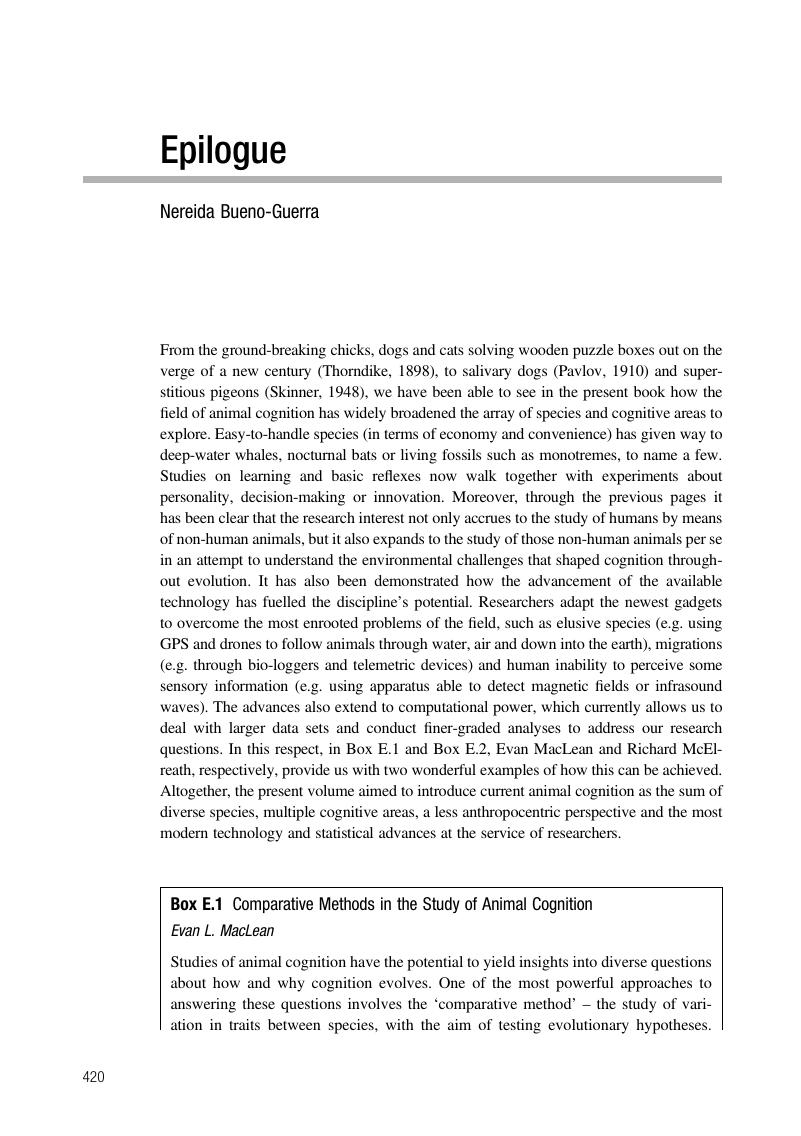Book contents
- Field and Laboratory Methods in Animal Cognition
- Field and Laboratory Methods in Animal Cognition
- Copyright page
- Dedication
- Contents
- Contributors
- Foreword
- Acknowledgements
- Introduction. The Concept of Umwelt in Experimental Animal Cognition
- 1 Ants – Individual and Social Cognition
- 2 Bats – Using Sound to Reveal Cognition
- 3 Bees – The Experimental Umwelt of Honeybees
- 4 Carib Grackles – Field and Lab Work on a Tame, Opportunistic Island Icterid
- 5 Chicken – Cognition in the Poultry Yard
- 6 Chimpanzees – Investigating Cognition in the Wild
- 7 Dolphins and Whales – Taking Cognitive Research Out of the Tanks and into the Wild
- 8 Elephants – Studying Cognition in the African Savannah
- 9 Fish – How to Ask Them the Right Questions
- 10 Hermit Crabs – Information Gathering by the Hermit Crab, Pagurus bernhardus
- 11 Hyenas – Testing Cognition in the Umwelt of the Spotted Hyena
- 12 Lizards – Measuring Cognition: Practical Challenges and the Influence of Ecology and Social Behaviour
- 13 Meerkats – Identifying Cognitive Mechanisms Underlying Meerkat Coordination and Communication: Experimental Designs in Their Natural Habitat
- 14 Octopuses – Mind in the Waters
- 15 Grey Parrots (Psittacus erithacus) – Cognitive and Communicative Abilities
- 16 Sharks – Elasmobranch Cognition
- 17 Spiders – Hints for Testing Cognition and Learning in Jumping Spiders
- 18 Tortoises – Cold-Blooded Cognition: How to Get a Tortoise Out of Its Shell
- Epilogue
- Index
- References
Epilogue
Published online by Cambridge University Press: 30 July 2018
- Field and Laboratory Methods in Animal Cognition
- Field and Laboratory Methods in Animal Cognition
- Copyright page
- Dedication
- Contents
- Contributors
- Foreword
- Acknowledgements
- Introduction. The Concept of Umwelt in Experimental Animal Cognition
- 1 Ants – Individual and Social Cognition
- 2 Bats – Using Sound to Reveal Cognition
- 3 Bees – The Experimental Umwelt of Honeybees
- 4 Carib Grackles – Field and Lab Work on a Tame, Opportunistic Island Icterid
- 5 Chicken – Cognition in the Poultry Yard
- 6 Chimpanzees – Investigating Cognition in the Wild
- 7 Dolphins and Whales – Taking Cognitive Research Out of the Tanks and into the Wild
- 8 Elephants – Studying Cognition in the African Savannah
- 9 Fish – How to Ask Them the Right Questions
- 10 Hermit Crabs – Information Gathering by the Hermit Crab, Pagurus bernhardus
- 11 Hyenas – Testing Cognition in the Umwelt of the Spotted Hyena
- 12 Lizards – Measuring Cognition: Practical Challenges and the Influence of Ecology and Social Behaviour
- 13 Meerkats – Identifying Cognitive Mechanisms Underlying Meerkat Coordination and Communication: Experimental Designs in Their Natural Habitat
- 14 Octopuses – Mind in the Waters
- 15 Grey Parrots (Psittacus erithacus) – Cognitive and Communicative Abilities
- 16 Sharks – Elasmobranch Cognition
- 17 Spiders – Hints for Testing Cognition and Learning in Jumping Spiders
- 18 Tortoises – Cold-Blooded Cognition: How to Get a Tortoise Out of Its Shell
- Epilogue
- Index
- References
Summary

- Type
- Chapter
- Information
- Field and Laboratory Methods in Animal CognitionA Comparative Guide, pp. 420 - 425Publisher: Cambridge University PressPrint publication year: 2018



